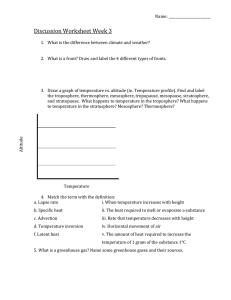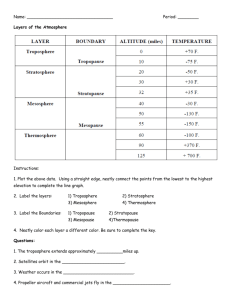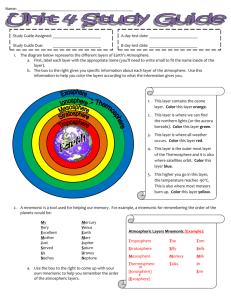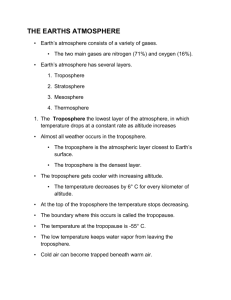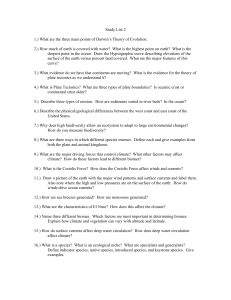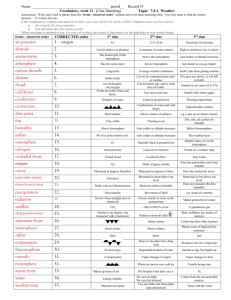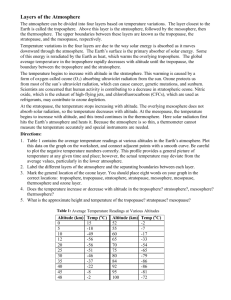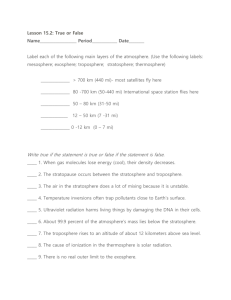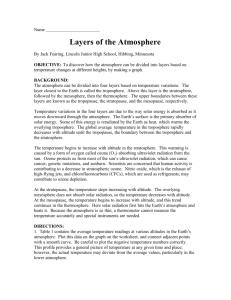Atmosphere Study Guide Answer Key
advertisement
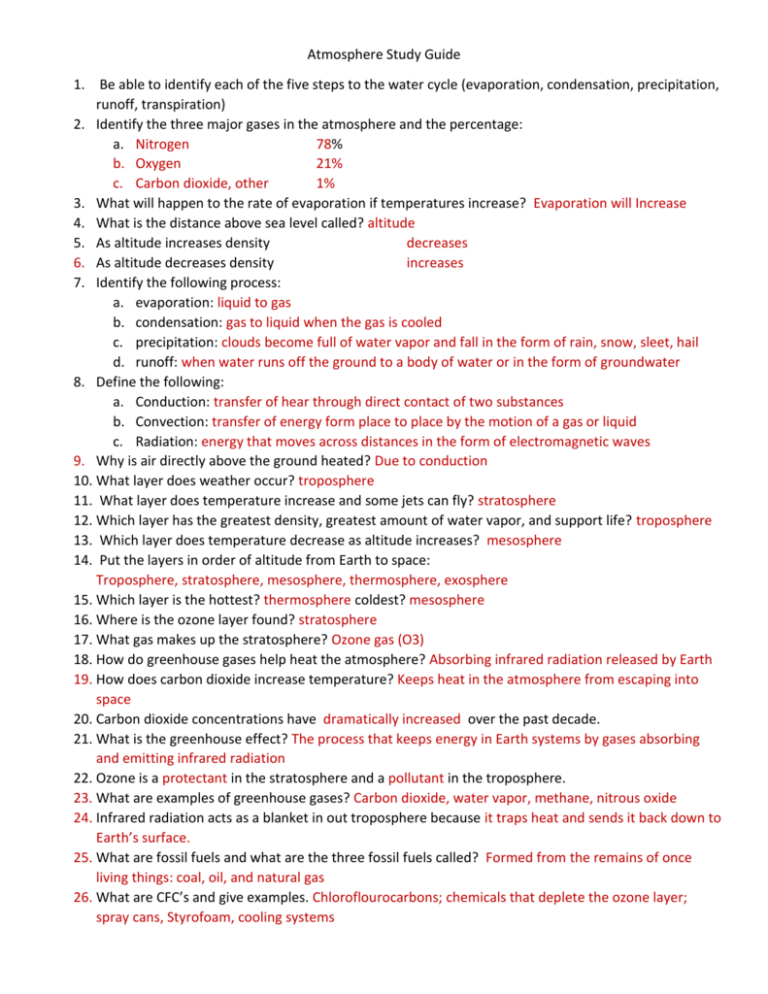
Atmosphere Study Guide 1. Be able to identify each of the five steps to the water cycle (evaporation, condensation, precipitation, runoff, transpiration) 2. Identify the three major gases in the atmosphere and the percentage: a. Nitrogen 78% b. Oxygen 21% c. Carbon dioxide, other 1% 3. What will happen to the rate of evaporation if temperatures increase? Evaporation will Increase 4. What is the distance above sea level called? altitude 5. As altitude increases density decreases 6. As altitude decreases density increases 7. Identify the following process: a. evaporation: liquid to gas b. condensation: gas to liquid when the gas is cooled c. precipitation: clouds become full of water vapor and fall in the form of rain, snow, sleet, hail d. runoff: when water runs off the ground to a body of water or in the form of groundwater 8. Define the following: a. Conduction: transfer of hear through direct contact of two substances b. Convection: transfer of energy form place to place by the motion of a gas or liquid c. Radiation: energy that moves across distances in the form of electromagnetic waves 9. Why is air directly above the ground heated? Due to conduction 10. What layer does weather occur? troposphere 11. What layer does temperature increase and some jets can fly? stratosphere 12. Which layer has the greatest density, greatest amount of water vapor, and support life? troposphere 13. Which layer does temperature decrease as altitude increases? mesosphere 14. Put the layers in order of altitude from Earth to space: Troposphere, stratosphere, mesosphere, thermosphere, exosphere 15. Which layer is the hottest? thermosphere coldest? mesosphere 16. Where is the ozone layer found? stratosphere 17. What gas makes up the stratosphere? Ozone gas (O3) 18. How do greenhouse gases help heat the atmosphere? Absorbing infrared radiation released by Earth 19. How does carbon dioxide increase temperature? Keeps heat in the atmosphere from escaping into space 20. Carbon dioxide concentrations have dramatically increased over the past decade. 21. What is the greenhouse effect? The process that keeps energy in Earth systems by gases absorbing and emitting infrared radiation 22. Ozone is a protectant in the stratosphere and a pollutant in the troposphere. 23. What are examples of greenhouse gases? Carbon dioxide, water vapor, methane, nitrous oxide 24. Infrared radiation acts as a blanket in out troposphere because it traps heat and sends it back down to Earth’s surface. 25. What are fossil fuels and what are the three fossil fuels called? Formed from the remains of once living things: coal, oil, and natural gas 26. What are CFC’s and give examples. Chloroflourocarbons; chemicals that deplete the ozone layer; spray cans, Styrofoam, cooling systems 27. What effects can air pollution cause? Add harmful gases to the air, harm humans and other living things, decrease the amount of ozone in the stratosphere 28. Why would you want to use renewable sources of energy? They are safer for the environment 29. Building gas efficient engines will likely reduce air pollution.
